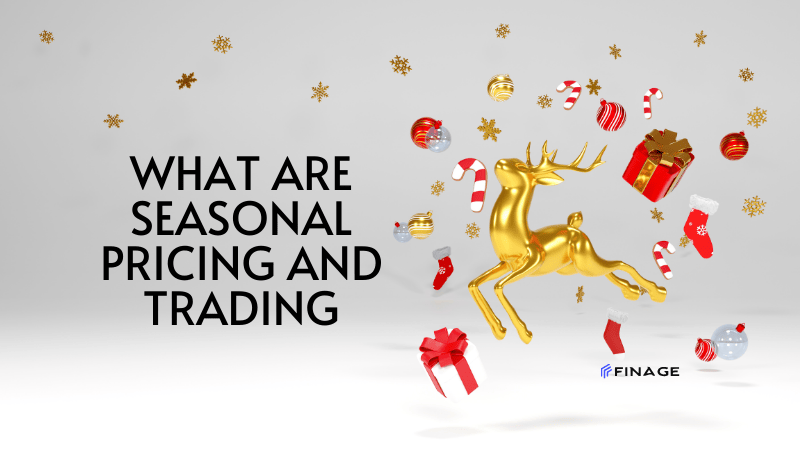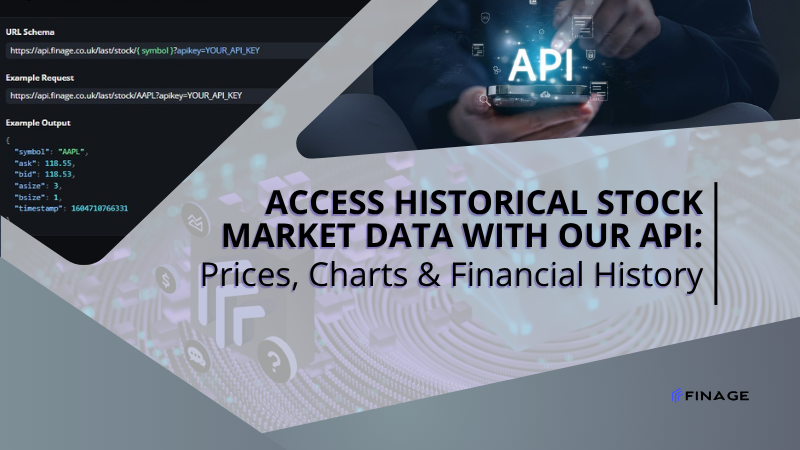What Are Seasonal Pricing and Trading
5 min read • December 18, 2024

Introduction
Seasonal pricing is something that has been around for years. It is a way for some industries to maximize on sales during peak seasons. Prices that change during various periods of the year can be an advantage. For the high peak season, advantage can result in higher profits.
The spending habits of customers change throughout the year. For instance, obviously during the holiday season like Christmas, more people are likely to buy certain products for winter time as compared to other parts of the year. So what are the benefits and how can you create an effective seasonal pricing strategy? Let’s find out all you need to know in order to maximize this pricing model, what tools to use and how to use WebSocket for real-time financial data as an example.
Contents:
- Benefits
- Profit and seasonal success
- Creating an effective strategy
- Understand your customers
- Identify the seasons
- Mini seasons and local events
- Set prices
- Track performance
- Final thoughts
Benefits
This pricing model can either be during a specific season like summer or winter or the holidays. This strategy is used by various industries including:
- Travel agencies
- Hotels
- Airlines
- Retail
Profit and seasonal success
As a result, the retail industry in the US A is projected to make 973 billion US dollars during the holiday season. So what are some of the benefits? It just doesn't mean you will make profits during peak season. It should also help you maintain profits throughout the year. The many benefits include:
- Increased revenue from high prices
- Regular cash flow throughout the year
- Effective inventory management with minimal wastage
- Competitive pricing that attracts customers
- Personalized pricing depending on the target audience
Creating an effective strategy
Now that you understand the benefits, it is time to discuss some of the best practices for seasonal pricing. Coming up with the right strategy can help you maximize on sales and profits.
Understand your customers
Start by looking at customers' buying habits. Look at past sales records to understand peak periods. Look for any trends or periods of fluctuations in sales. If this has been occurring during the same period in the last few years then it is a sign of a peak season. This information can also give you a better idea if seasonal pricing is the right fit for your business.
Identify the seasons
A common misconception is that this mode of pricing simply refers to seasons. However, that is not always the case. Depending on your niche, it could mean a particular holiday or event. For instance, Christmas, Easter or football season.
The first step you should take is identifying the season where your products are in high demand. Start by looking at your historical data with the Historical Market Data API.This will show periods when sales peak. If you are able to pick up a pattern, then it should be easier to figure out the seasons. You can then create a strategy around this period. Ideally, there are three seasons:
- Peak
- Off
- Shoulder
Mini seasons and local events
The shoulder season occurs right before prices peak. Customers may still be willing to buy more at this time compared to the off season. Aside from the peak period, there may be other shorter seasons where customers may be willing to spend more.
Try to identify these mini demand periods as they can contribute to your overall revenue. Mini seasons can be as a result of local activities or events such as concerts.
Set prices
Setting prices is not always a straightforward affair. It takes considerable planning. You should take time to analyze various data including:
- Competitor prices
- Price fluctuations
- Discounts
The goal is to find a price that is both competitive and accommodates demands. You may have to test out different prices at first. This allows you to pick prices that will encourage sales while offering profits.
Be careful when setting discounts as low prices may give a misconception that products are of a lower quality. Also consider how low you are willing to go during periods of low demand. The minimum should be the lowest amount that you are comfortable with. It should still allow for profits.
Track performance
Once you have set the seasons and prices, it is not time to relax. Instead, this is the right time to test if your strategy is effective. The best way is through continuous monitoring. Things to analyze include:
- Number of sales
- Revenue generated
- Customer satisfaction
- Brand awareness
Make sure you get customer feedback. This will help you make improvements and remain competitive. Also, you will be able to adjust prices based on results, which provides room for improvement.
Final thoughts
Knowing how to position your brand during peak season can lead to higher profit margins. It all starts with understanding your target audience and their spending habits. Don't hesitate to try out different prices until you find something that works well for your customers. Do not limit yourself to peak seasons, identify other periods when your products are in high demand. You can use the financial data API for economic research and get the pertinent information to make informative decisions.
Remember that seasonal pricing is different for each brand. The key is to identify your customers, their needs, and spending habits. Assess competitor data to get a better idea of pricing. With competitive prices, you can keep customers and ensure that sales are high during periods of increased demand.
You can get your Real-Time and Historical Market Data with a free API key.
Build with us today!
Claim Your Free API Key Today
Access stock, forex and crypto market data with a free API key—no credit card required.

Stay Informed, Stay Ahead
Finage Blog: Data-Driven Insights & Ideas
Discover company news, announcements, updates, guides and more


